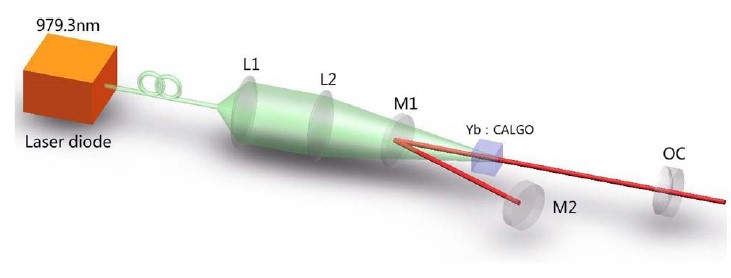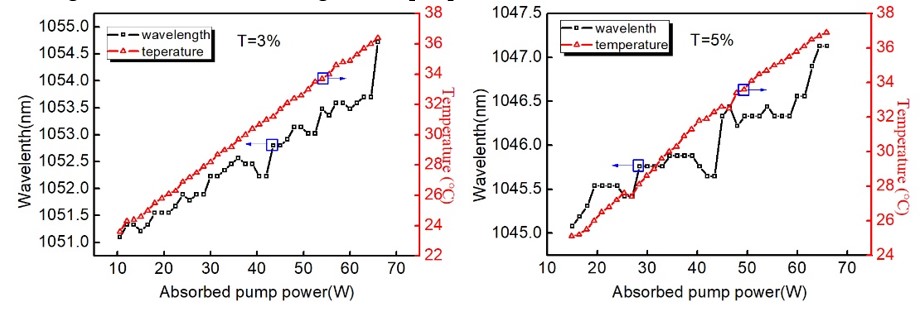In 1960, Maiman’s first demonstration of the ruby laser initiated the beginning of the laser era. Ever since then, laser has found its applications in materials processing, medicine and biology, measurement techniques, and science, as well as communication and entertainment. Solid-state laser remains one of the most rapidly developing branches of laser science and has improved amazingly during last six decades while the gain media with good characteristics is essential for realizing a highly efficient solid-state laser.
It is now widely recognized that Yb3+-doped crystals have significant potential in the development of directly diode-pumped high-power and ultrafast lasers. Among them, the Yb3+-doped CaGdAlO4 crystal (Yb:CALGO) performs well for its high thermal conductivity and broadest and flattest emission spectra of all the Yb3+-doped materials. Therefore, studying the laser performances of Yb:CALGO is of great significance for high peak power ultrashort pulse generation.
In a recent study, researchers in Shanghai Institute of Optics and Fine Mechanics, Chinese Academy of Sciences, have made new progress in the research of a diode-pumped continuous-wave Yb:CALGO laser. The findings were published in Applied Optics.
In the experiment, a diode-pumped continuous wave Yb:CALGO laser with an output power of 11W and a slope efficiency of 19.8% was demonstrated. The effects of crystal temperature on wavelength emission was investigated. The crystal temperature was firstly controlled by changing the pump power. The output wavelength obviously shifted to the longer wavelength for output couplers with different transmissions as the temperature of the crystal increased.
They found that, for T =3% output coupler, the out wavelength shifted range from 1051.10 nm to 1054.72 nm, as the temperature of crystal changed from 23.6°C to 36.4°C. And for T =5% output coupler, the out wavelength shifted from 1045.08 nm to 1047.13 nm, and the temperature of crystal changed from 25.1°C to 36.9°C. For T =3% output coupler, an experiment at the fixed pump power was also carried out.
The crystal temperature was altered through cooling water. When the temperature of crystal increased from 32.2°C to 38.2°C, the output wavelength shifted from 1052.23 nm to 1052.80 nm. The wavelength shift with temperature in the CW Yb:CALGO laser could be explained with a temperature dependent model. The rise in temperature increased the population density in the upper levels of ground manifold, according to Boltzmann distribution. Consequently, when the laser operated above a certain temperature threshold, the previous two energy levels could no longer meet the condition of the population inversion. However, the population inversion still existed between the excited level and upper ground level. As a result, the population inversion would vanish for the shorter laser wavelength and a longer wavelength would dominate.
Due to the much more complicated Stark-splits of ground manifold and excited manifold of Yb:CALGO, a series of output wavelength were observed with the changing temperature.
This wavelength shift phenomenon would be especially important for intracavity optical parametric oscillator and might be favorable for some special purposes, including tunable lasers for certain wavelengths and any other wavelength-sensitive researches.

Fig. 1. Schematic setup of the CW Yb:CALGO laser. (Image by SIOM)
Fig. 2. Output wavelength and temperature of crystal versus the pump power. (Image by SIOM)
Article website:
https://doi.org/10.1364/AO.385337
Contact:
Mr. CAO Yong
General Administrative Office
Shanghai Institute of Optics and Fine Mechanics, CAS
Email: caoyong@siom.ac.cn